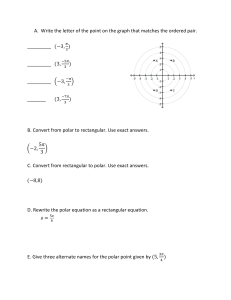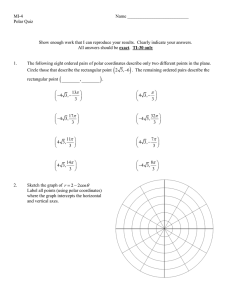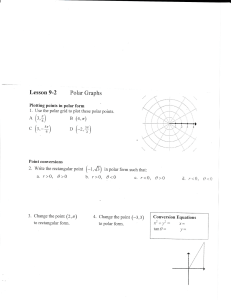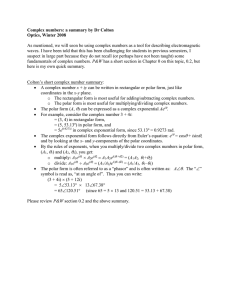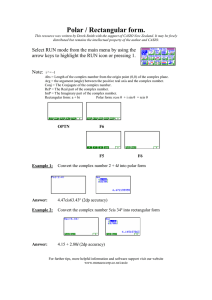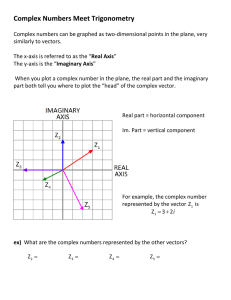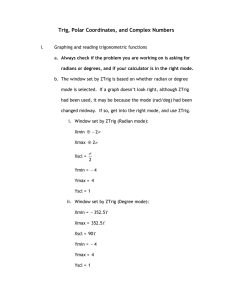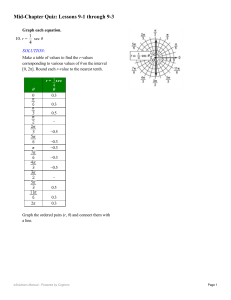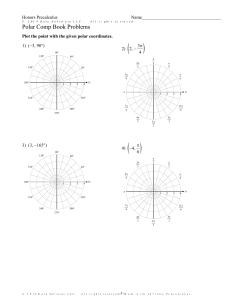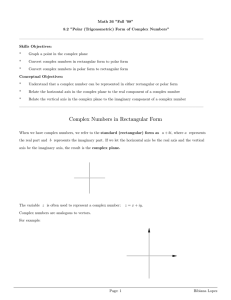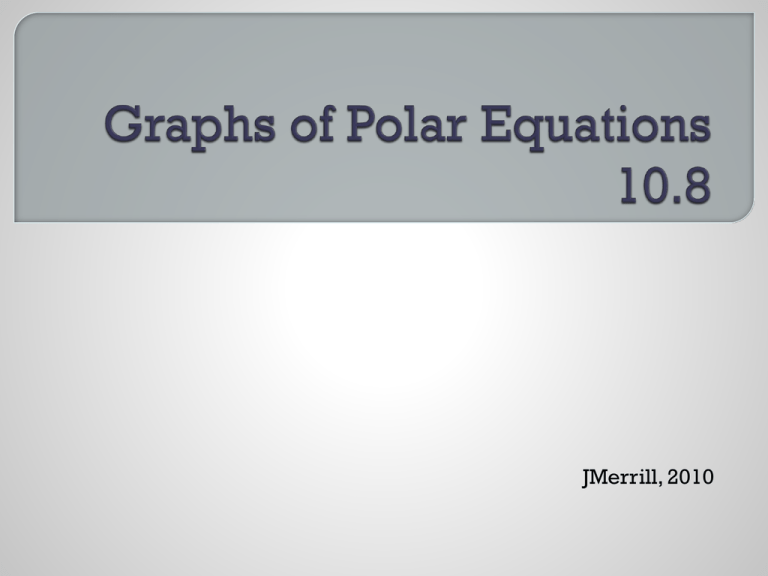
JMerrill, 2010
Coordinate
Conversion
To convert from polar to rectangular:
x = r cosθ
y = r sinθ
To convert from rectangular to polar:
y
tanθ = x
x2 + y2 = r2
2, 53
There are many ways to represent the point 2, 3 .
2
2, 3
2, 3 2, 53
(r, ) r, 2n
When converting from one coordinate
system to the other, we will only use 1
point instead of multiple
representations.
1
2
3
0
3
2
3
There are 3 tests for symmetry, but they don’t
always work, so we’ll use the Quick Test
For
equations like r = f(sin θ)
• Graph is symmetric to the line y
For
2
equations like r = g(cos θ)
• Graph is symmetric to the polar (x) axis
See
Ex. 2 on page 786—a good use of
sketching using symmetry.
Example:
Find the zeros and the maximum value of r
for the graph of r = 2cos .
2
The maximum value of r is
2. It occurs when = 0 and
r 0 when
and 3 .
2
2
2.
1
These are the zeros
2
3
0
of r.
3
2
Copyright © by Houghton Mifflin Company, Inc. All
rights reserved.
Symmetric about the
polar axis
6

